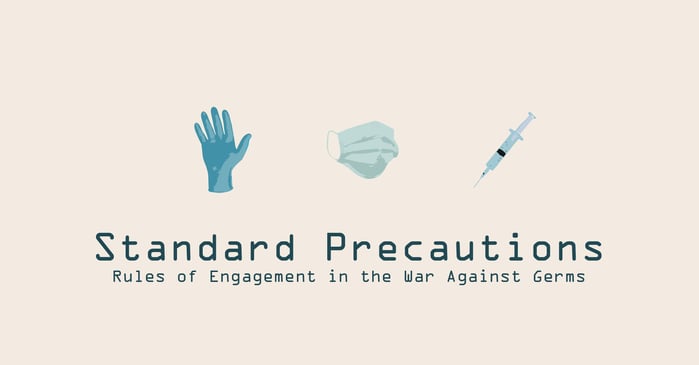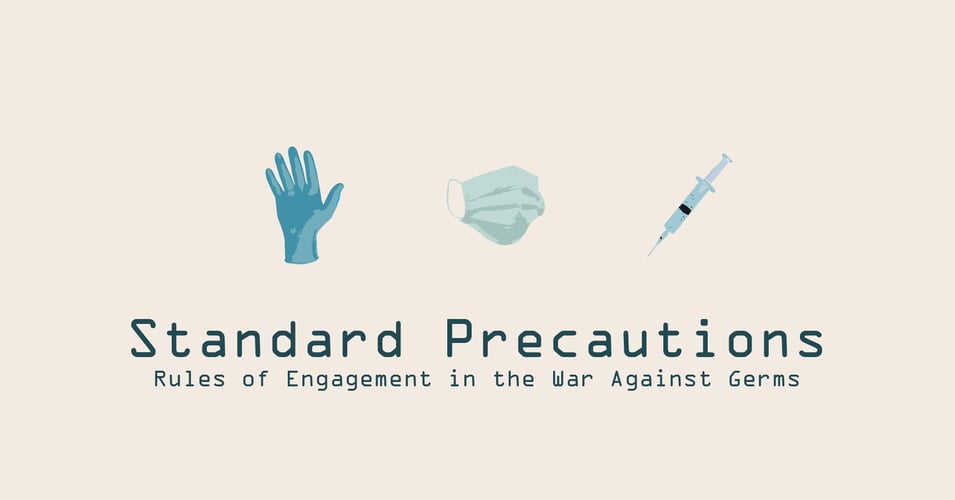The Rules of Engagement: Injection Safety

 Injections are one of the most common procedures taking place in a medical setting (16 billion administered globally each year). This common procedure presents a significant opportunity for infection since it breaks the skin barrier, may involve products used for multiple patients, and is performed so often that lapses in preventive measures can become serious outbreaks. Today we’ll explore the safety precautions that are in place to prevent patient harm, what lapses are frequent enough to raise an alarm, and what you can do to help support injection safety.
Injections are one of the most common procedures taking place in a medical setting (16 billion administered globally each year). This common procedure presents a significant opportunity for infection since it breaks the skin barrier, may involve products used for multiple patients, and is performed so often that lapses in preventive measures can become serious outbreaks. Today we’ll explore the safety precautions that are in place to prevent patient harm, what lapses are frequent enough to raise an alarm, and what you can do to help support injection safety.
The Centers for Disease Control and Prevention (CDC) is the agency that has created a set of safety precautions about injections. Here is a quick look at their guidelines.
- Sterile equipment cannot touch non-sterile surfaces.
- One syringe for one patient.
- IV bags are for one patient only; throw away leftovers. Any syringe or needle used to inject into the IV bag should be thrown away.
- Use single-dose vials for injections whenever possible.
- Single-dose medications are for one patient Leftovers cannot be combined.
- Multi-dose vials must be accessed with sterile needles and syringes each time.
- Multi-dose vials must be stored and accessed in a clean medication preparation area, and never in the patient treatment area. Throw vials away if sterility is compromised or in doubt.
- IV solution from one bag is for one patient
- Surgical masks are required for injections in the spinal canal or subdural space.
These guidelines seem pretty basic and even obvious, don’t they? And yet outbreaks have occurred due to lapses in every single one of them. Outbreaks have been traced back to using syringes and IV fluid for multiple patients, combining leftover medicines, contaminated multi-dose vials – all of them. These outbreaks have led to the transmission of Hepatitis B, Hepatitis C, Malaria, bloodstream infections, central nervous system infections, and MRSA. More than 150,000 patients have been impacted by unsafe medical injections since 2001. There have been more than 50 outbreaks involving lapses in safe injection practices since 2001; just under half of the outbreaks led to the transmission of Hepatitis B or C, and over half led to severe bacterial bloodstream infections.
Due to the growing number of outbreaks due to lapses in injection safety precautions, the CDC has turned their attention to safe injection practices. Their One and Only Campaign, in collaboration with the Safe Injection Practices Coalition intends to raise awareness among healthcare workers and patients about safe injection practices. They are able to reduce the basic precautions about injection safety to this three-point rule: Use needles, syringes, and single-dose medication vials only one time, for one patient.
Consider this: Many patients who are getting an injection in the first place are already ill and fighting a chronic condition, cancer, or another disease which has weakened their immune system. If they are exposed to a virus or bacteria due to a lapse in basic injection safety, they may not be strong enough to survive. Injection safety is a matter of life and death.
What can you do to ensure safe injections for you and your loved ones?
Ask your healthcare provider if there is going to be a new needle, new syringe, and new vial for the procedure or injection. Ask about the infection prevention practices, including questions using the information from the 9 points listed above. For example, you can ask if the injection came from a single or multi-dose vial. If a multi-dose vial was used, ask them where the medication was prepared and if a new needle and syringe was used. Watch during procedures to make sure that your provider throws away syringes and needles each time and opens a new one, even when accessing IV fluid. And do not let yourself worry about seeming rude; healthcare providers are very aware of the issue with injection safety and will understand, and share, your concern.
This concludes our series on standard safety precautions. These precautions help keep everyone safe but there are some downsides when patients require extreme isolation precautions.
Editor's Note: This post was originally published in April 2016 and has been updated for freshness, accuracy and comprehensiveness.
![EOScu Logo - Dark - Outlined [07182023]-01](https://blog.eoscu.com/hubfs/Eoscu_June2024/Images/EOScu%20Logo%20-%20Dark%20-%20Outlined%20%5B07182023%5D-01.svg)

![Outpatient Services and Infection Control: Moving Forward [Part 5]](https://blog.eoscu.com/hs-fs/hubfs/Small_Blog_Headers/Outpatient_Services-01.jpg?height=500&name=Outpatient_Services-01.jpg)

